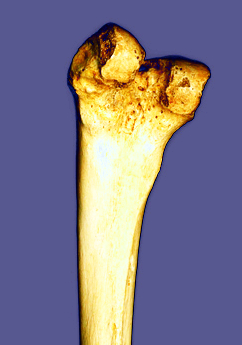Cloned bones shaken into shape
 Scientists have grown new bones in the lab using some of the equipment designed to detect gravitational waves.
Scientists have grown new bones in the lab using some of the equipment designed to detect gravitational waves.
A common criticism of research in far-off fields like astrophysics is that it does little for life on Earth, but this project shows our efforts in space have impacts much closer to home.
Scottish researchers says their new bioreactor uses technology designed to detect the ripples in space and time, repurposed to measure impossibly small vibrations just a few billionths of a metre across.
Bone is the second most commonly transplanted tissue in the world, behind blood, but ageing populations mean demand continues to rise.
The new technique is designed to grow new pieces of bone from a patient’s own stem cells.
This could reduce the need for painful surgery to remove bone from other parts of the body, and cut the risk of rejection.
Instead of chemicals or drugs, the team uses tiny high frequency vibration, called ‘nanokicking’, to trigger stem cells to turn into bone producing cells.
This kind of physical stimulation prompts bone growth due to the fact that bones are very responsive to pressure.
When they do not have stresses placed on them from movement, bones erode, but applying pressure and vibration known as “bone loading” keeps bones repairing themselves.
Artificial ‘nanokicking’ simulates bone loading to trigger the same transformation that happens naturally as the bones in our body grow and heal throughout our lifetime
University of the West of Scotland researcher Professor Stuart Reid says the size of the movements that trigger the cells to transform is so small, it is like “sliding a single sheet of paper in and out from under a football on a table”.
To measure movements so small, the team used the same laser technology as in the hunt for gravitational waves, albeit a scaled-down version.
The plan is to implant the shaken cells where needed to fuse with existing bone and heal bone damage or fractures.
The team is now looking ahead, planning to test their lab-grown bone in people as soon as possible. Further down the line it may even be possible to ‘nanokick’ patients directly to heal fractures without surgery.








 Print
Print